|
|
Post by sockhom on Aug 5, 2008 22:43:57 GMT -10
|
|
|
|
Post by sockhom on Aug 5, 2008 22:45:53 GMT -10
Hi Marcello, Are there any basic key differences between N. kampotiana and N. kongkandana? Truly, Tom |
|
|
|
Post by sockhom on Aug 5, 2008 22:46:25 GMT -10
Hi Tom, mainly one: kampotiana is glabrous, kongkandana is as hairy as smilesii. Marcello |
|
|
|
Post by sulud1 on Aug 9, 2008 10:17:26 GMT -10
Hi Marcello,
So what are the differences between N. kongkandana and N. smilesii? I have these three different plants from southern Thailand and they are hairy like N. smilesii sort of. Two have the sparse surface hairs like N. smilesii on the leaf and pubescent hairs along the 1/3-1/4 of the tip of the leaf edges. Unlike N. kampotiana which the leaf surface and edge is smooth.
All three plants traps are distinctly different from N. kampotiana even when young. I do find pubescent hairs on the tendrils of N. kampotiana and the other three plants.
Truly,
Tom
|
|
|
|
Post by Marcello Catalano on Aug 9, 2008 23:35:52 GMT -10
Hi Tom,
N. kampotiana has infact slightly pubescent tendrils and pitchers.
N. smilesii and kongkandana are nearly identical, plus we have the problem of the new species also found in the south, spread in cultivation with those random names and still not classified and with poorly known taxonomical features; you could easily have one of those. As long as we don't find them in the wild we'll just have unknown plants in cultivation.
Anyway, N. kongkandana has shorter leaves, as broad as N. smilesii but thicker. I have adult plants of both and N. smilesii has leaves that are twice longer. N. kongkandana's lid is usually round. There is probably more, but we'll have to wait for Martin. Of course in the wild the difference between the two is more obvious, because you see how the general appearence of the two plants is different. N. smilesii is actually quite bigger: leaves, stems and pitchers.
N. kongkandana grows near the road, so it easily arrived in cultivation. I know that Nong bought some plants from a villager and he also found some plants on an island, so we can be sure that this species is already widespread around the world with some fancy name like "giant thorelii", "tiger" etc. If you have the precise location where it was found (not too precise, if you prefer), we can be more sure. Or if you have some photos of your three plants (no details, the general look is better)...
Marcello
|
|
|
|
Post by sulud1 on Aug 11, 2008 12:24:02 GMT -10
Hi,
I'll try and post some pics later. It's probably faster if I view the plants in the wild than wait for Kew.
Truly,
Tom
|
|
|
|
Post by Marcello Catalano on Aug 11, 2008 12:32:06 GMT -10
|
|
|
|
Post by sulud1 on Sept 15, 2008 10:31:43 GMT -10
Hi, Here's a plant I have that has hairs on the leaf margins but they are not fimbrate. 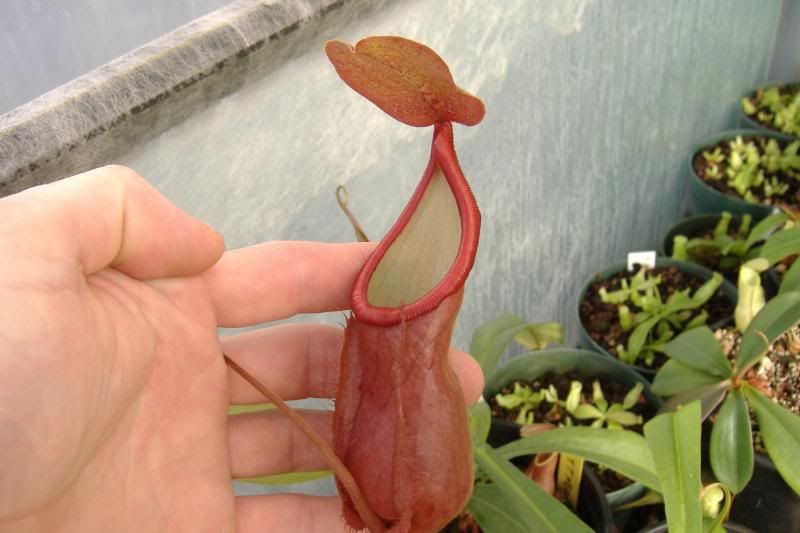 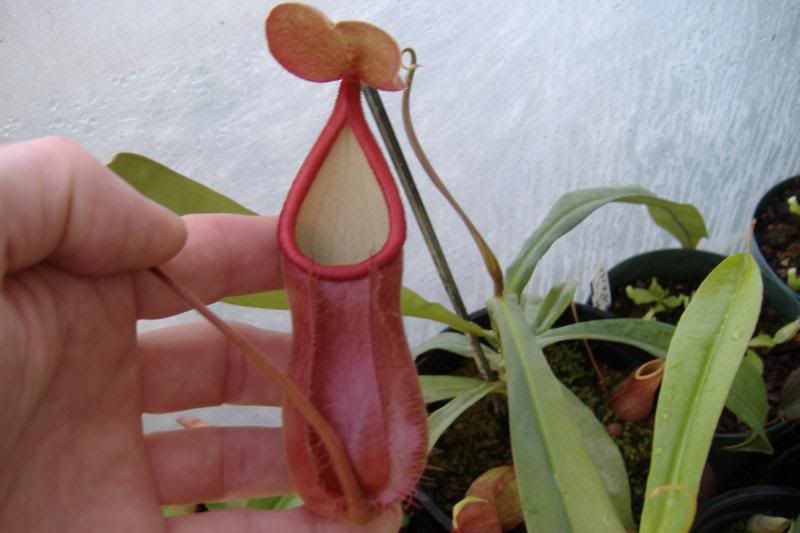  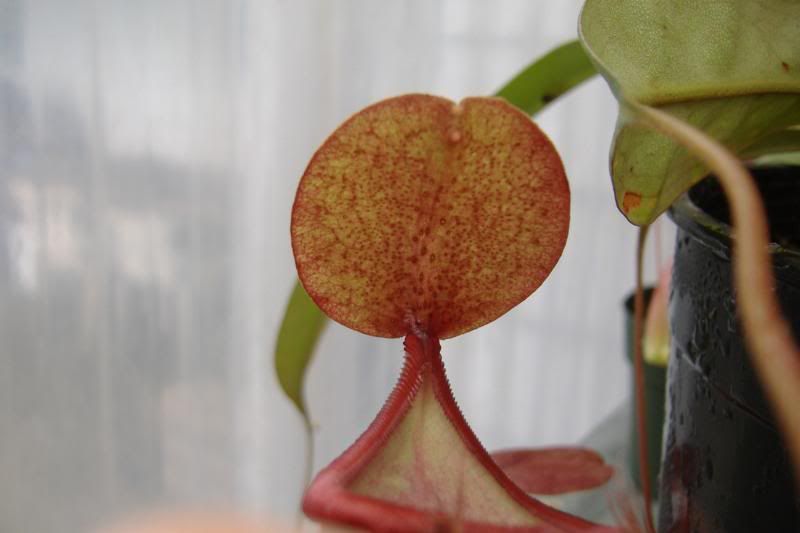 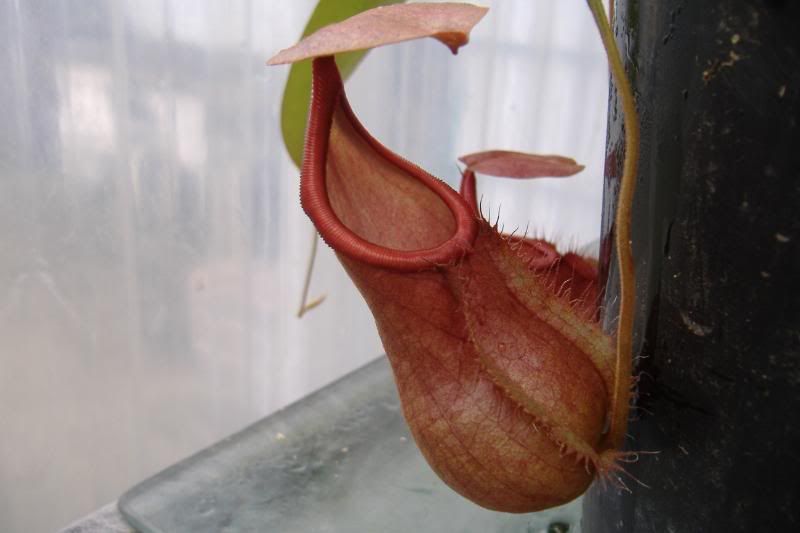 Don't know if this is the plant. 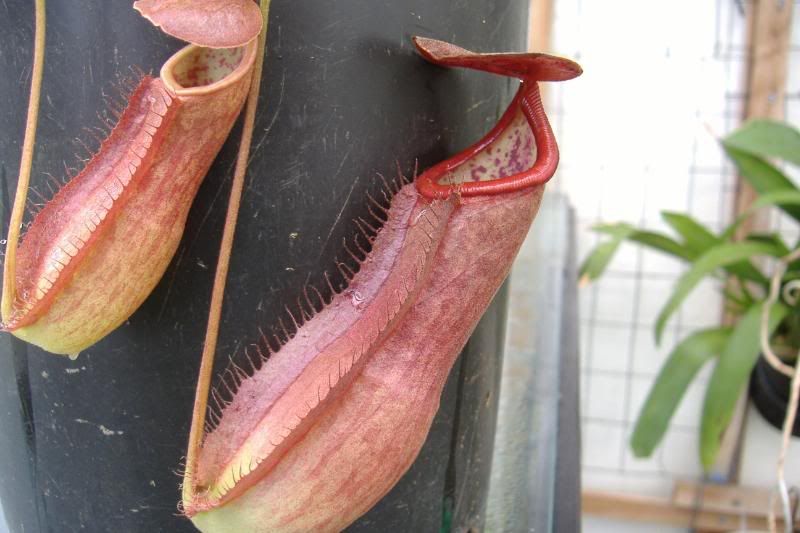 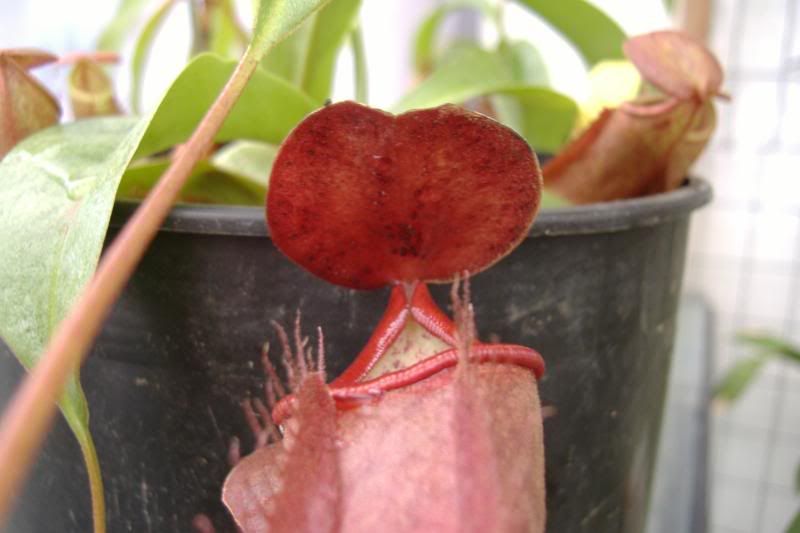 Last two pics are of something different? Truly, Tom |
|
|
|
Post by Marcello Catalano on Sept 19, 2008 4:59:29 GMT -10
Hi Tom, same problem as usual:
all I can say is that if the leaves are hairy we can say it's smilesii, kongkandana or a new species.
If the leaves are glabrous it's kampotiana or a new species.
Knowing the location the plants come from would be of course of great help.
The shape and colour of the pitchers doesn't help much, but I would say that the first plants can stay into the kampotiana/smilesii variations that I've personally seen, while the second plant looks more like kongkandana.
Marcello
|
|
|
|
Post by sockhom on Aug 24, 2009 3:00:08 GMT -10
|
|
|
|
Post by rainforest on Aug 24, 2009 7:55:31 GMT -10
I find it odd that they can separate N. kongkandana from smilesii yet find that N. sp. Viking is a synonym of N. mirabilis.
M
|
|
|
|
Post by sockhom on Aug 24, 2009 8:40:14 GMT -10
I find it odd that they can separate N. kongkandana from smilesii yet find that N. sp. Viking is a synonym of N. mirabilis. M Hi Michael, Let's wait for the paper on "Viking" then we can discuss about it. I agree this would be a good subject for a debate. Cheers, François. |
|
|
|
Post by rainforest on Aug 24, 2009 12:34:03 GMT -10
Do you have an idea when this long awaited paper is due? I know there are newer species which have gotten described sooner than this species. We already have third generation hybrids with Viking and still no real name to call it. I like N. globosa. When bred we see N. globosa, not N. mirabilis!
M
|
|
|
|
Post by sockhom on Aug 24, 2009 21:31:22 GMT -10
Do you have an idea when this long awaited paper is due? I know there are newer species which have gotten described sooner than this species. We already have third generation hybrids with Viking and still no real name to call it. I like N. globosa. When bred we see N. globosa, not N. mirabilis! M Hi Michael, All I'm allowed to say is that the paper has been submitted. It is now being reviewed. The problem I have with N. "Viking" is that I don't grow the plant. I used to but my sole strain turned out to be N. mirabilis x "Viking". According to some, the leaves and flower of "Viking" are exactly identical to those of mirabilis. What can you say from your own plants? Do you notice important differences with mirabilis apart from the globose shape and colour of the pitchers? About the description of a taxon, you know, it just needs someome to have the will, the patience, the dedication to take care of it... Sometimes, you find someome, sometimes not. For instance, who takes take care of the species 1 and 2 sold by BE? No one, I think (correct me if I'm wrong). But now we are at least three guys working on publishing Indochinese plants. However, if someone could have relocated the type "Viking" in that famous undisclosed island, I think the paper would have been published a long time ago. François. |
|
|
|
Post by rainforest on Aug 25, 2009 7:15:24 GMT -10
The flowers are different from my mirabilis. From the three forms of mirabilis I have they are all somewhat different from each other. Spacial flowers divided along the stems shows marked differences as well as color and even fragrance. If a plant can be labeled as different while their inflorescence is so similar (N. alba) I can't see why N. Viking can't be separated out from mirabilis as well.
Your assessment that your plant was a hybrid clearly shows that N. Viking is different from mirabilis in many ways. N. mirabilis inflorescences are very long, multi flowered spikes where as N. Viking is smaller, somewhat filled to a denser degree and coloration and tepal is also different from mirabils.
Hybrids between the Viking and mirabilis shows a hybrid inflorescence different from the two.
M
|
|